Indian Rhinoceros
- February 22, 2024
- 0 comment
The Indian Rhinoceros, also known as Rhinoceros unicornis, is a majestic mammal native to the Indian subcontinent. It’s characterized by its massive size, with males typically weighing between 2,200 to 3,000 kilograms, while females are slightly smaller. One of its most distinguishing features is its single black horn and thick, folded gray-brown skin, resembling armor plating. These rhinos primarily inhabit the floodplains and grasslands of northern India and Nepal, often found near rivers and swamps where tall grasses provide ample grazing. While they are primarily solitary animals, except during mating or when females are raising calves, communication among rhinos includes vocalizations like grunts and snorts, as well as scent marking.
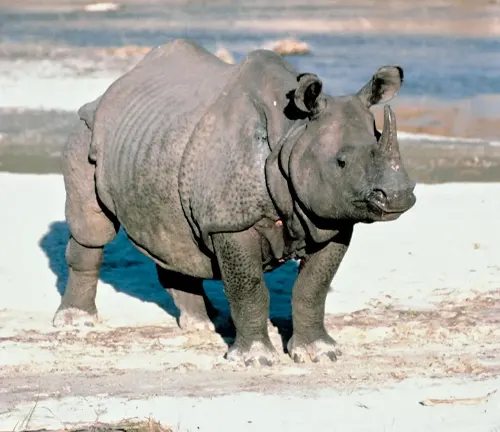
Their herbivorous diet consists mainly of grasses, leaves, fruits, and aquatic vegetation, with grazing being a significant portion of their daily routine. Breeding occurs year-round, with females having a gestation period of approximately 15 to 16 months before giving birth to calves, which remain with their mothers for several years. Unfortunately, these magnificent creatures face numerous threats, including habitat loss, poaching for their horns, and human-wildlife conflicts. Conservation efforts, such as protected areas and anti-poaching initiatives, are crucial for ensuring their survival in the wild. The Indian Rhinoceros serves as a keystone species in its habitat, influencing vegetation dynamics and supporting biodiversity, making it an essential part of the ecosystem.
| Specification | Description |
|---|---|
| Scientific Name | Rhinoceros unicornis |
| Common Name | Indian Rhinoceros |
| Average Weight | Male: 2,200 – 3,000 kilograms (4,850 – 6,610 pounds) |
| Female: Slightly smaller than males | |
| Horn | Single black horn |
| Skin | Thick, folded gray-brown skin resembling armor plating |
| Habitat | Floodplains and grasslands of northern India and Nepal |
| Geographic Range | Primarily in India and Nepal |
| Preferred Environment | Near rivers, swamps, and tall grasses |
| Social Structure | Primarily solitary, except during mating or when raising calves |
| Communication | Vocalizations (grunts, snorts) and scent marking |
| Diet | Herbivorous, feeding on grasses, leaves, fruits, and aquatic vegetation |
| Breeding | Year-round mating, gestation period of 15-16 months |
| Conservation Status | Vulnerable due to habitat loss, poaching, and human-wildlife conflict |
| Importance | Keystone species influencing vegetation dynamics and supporting biodiversity |
| Cultural Significance | Symbolic and religious significance in Indian culture |
| Tourism | Major draw for wildlife tourism, contributing to the local economy |
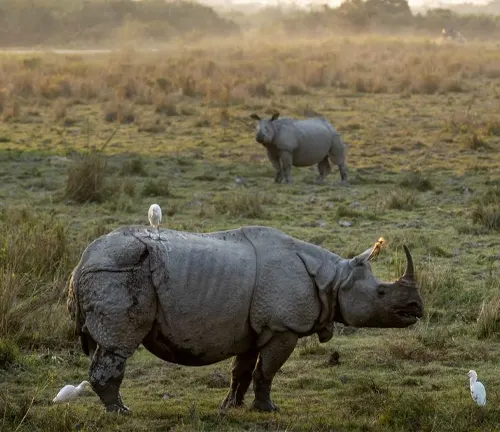
They hold cultural and symbolic significance in Indian culture, often depicted in art and mythology. Despite the challenges they face, these rhinos continue to be a significant draw for wildlife tourism, contributing to the local economy through ecotourism ventures. In conclusion, the Indian Rhinoceros is a remarkable species that deserves our attention and concerted efforts for its conservation and long-term survival.
Physical Description
Size and Weight
The Indian Rhinoceros, scientifically known as Rhinoceros unicornis, is renowned for its impressive size and weight. Typically, males of the species can weigh between 2,200 to 3,000 kilograms (about 4,850 to 6,610 pounds), making them one of the largest land mammals in Asia. Females are slightly smaller than males, but still possess considerable bulk. Standing at shoulder height, these majestic creatures can reach heights of up to 1.75 to 2 meters (approximately 5.7 to 6.6 feet), adding to their imposing presence in their natural habitat.
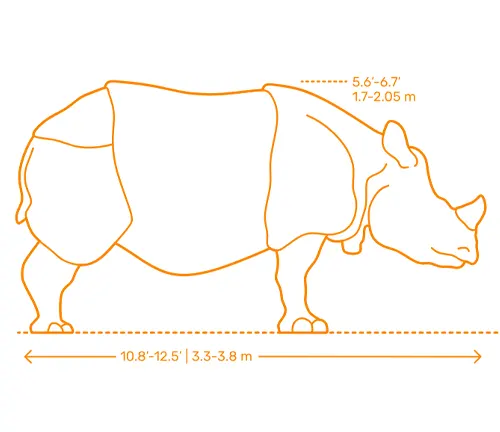
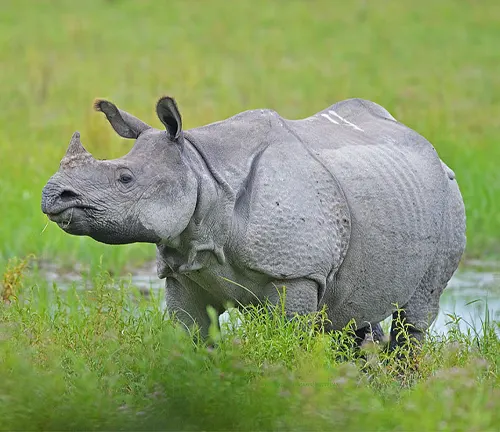
Skin and Horns
The Indian Rhinoceros is distinguished by its thick, folded gray-brown skin, which serves as a protective layer against various environmental elements. This rugged skin resembles armor plating, providing insulation and defense against potential threats. Additionally, these magnificent animals possess a single black horn, protruding prominently from the nasal area. This horn, composed of keratin, is a defining feature of the species and adds to their formidable appearance.
Habitat and Distribution
Geographic Range
The Indian Rhinoceros, scientifically known as Rhinoceros unicornis, is primarily found in the Indian subcontinent. Its range extends across the floodplains and grasslands of northern India and Nepal. Specifically, these magnificent creatures inhabit regions such as the Terai Arc Landscape in Nepal and the Brahmaputra Valley in India. Historically, their range might have extended into parts of Pakistan, Bangladesh, and Bhutan, but today, they are predominantly concentrated in India and Nepal.
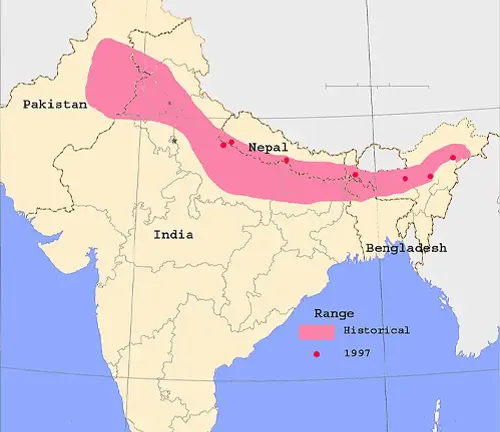
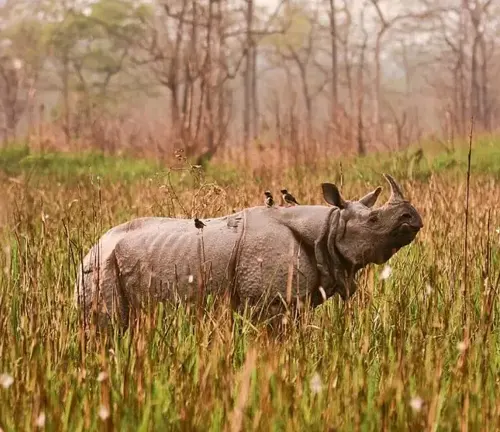
Preferred Environment
The Indian Rhinoceros prefers habitats characterized by the proximity of water bodies such as rivers, swamps, and marshlands. These habitats provide essential resources such as water for drinking and wallowing, as well as lush vegetation for grazing. Tall grasses, reeds, and shrubs are abundant in their preferred environments, offering ample cover and food sources. The dense vegetation also serves as a refuge from predators and human disturbances. Additionally, the presence of water bodies allows Indian Rhinoceroses to indulge in their characteristic wallowing behavior, which helps regulate body temperature and maintain skin health.
Behavior and Social Structure
Solitary or Social?
The Indian Rhinoceros, also known as Rhinoceros unicornis, is primarily a solitary animal. Unlike some other species of rhinoceros that form herds, Indian Rhinoceroses tend to lead solitary lives, except during specific circumstances. However, they may exhibit some degree of social behavior during mating or when females are raising their calves. Adult males, especially, are known to be territorial and may aggressively defend their territories from other males.
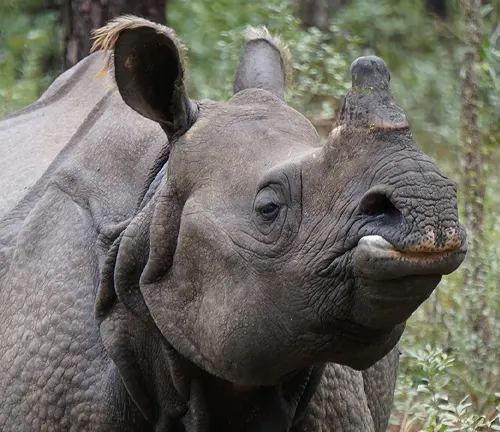
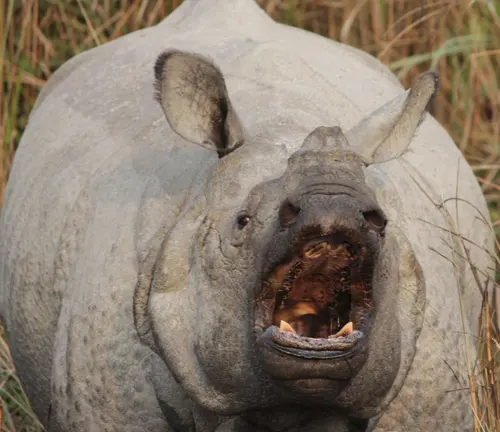
Communication
Communication among Indian Rhinoceroses primarily occurs through various vocalizations and scent marking. While they are not known for their vocal repertoire, they do emit sounds such as grunts, snorts, and occasional trumpeting, especially during mating or when feeling threatened. Additionally, Indian Rhinoceroses rely heavily on scent marking to communicate with other individuals. They use their preorbital glands located near their eyes to deposit scent markings on trees, rocks, and other objects within their territories. These scent markings convey important information about territory boundaries, reproductive status, and individual identity to other rhinos in the area.
Diet and Feeding Habits
Herbivorous Lifestyle
The Indian Rhinoceros, scientifically known as Rhinoceros unicornis, is primarily a herbivore, meaning it feeds exclusively on plant matter. Their diet consists mainly of grasses, leaves, fruits, and aquatic vegetation found in their native habitats. These rhinos have evolved to be well-adapted to a herbivorous lifestyle, with specialized teeth and digestive systems suited for processing fibrous plant material.
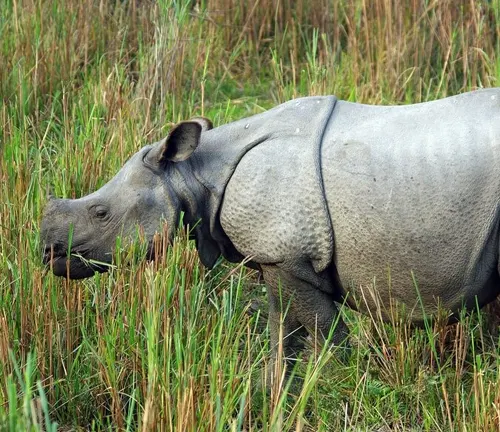
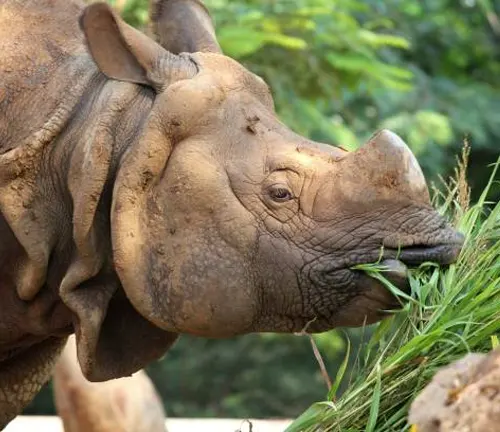
Feeding Patterns
Indian Rhinoceroses are predominantly grazers, spending a significant portion of their day foraging for food. They typically feed during the cooler parts of the day, such as early morning and late afternoon, to avoid the heat of the midday sun. Their feeding patterns vary depending on factors such as food availability, seasonal changes, and individual preferences. Indian Rhinoceroses use their prehensile lips to grasp and pull vegetation into their mouths, utilizing their massive size and strength to access otherwise inaccessible food sources. They may also browse on shrubs and trees, especially during times when grasses are scarce. Overall, the Indian Rhinoceros has a varied diet consisting of a wide range of plant species, allowing them to obtain the necessary nutrients for survival.
Reproduction and Lifecycle
Mating Behavior
The Indian Rhinoceros, also known as Rhinoceros unicornis, exhibits interesting mating behavior characterized by competition among males for access to females. Breeding can occur throughout the year, although there may be peaks during certain seasons. During mating season, males become more territorial and may engage in aggressive encounters with rival males to establish dominance and secure mating rights with females. Dominant males often use vocalizations and scent marking to signal their presence and intimidate potential rivals. Once a dominant male has successfully courted a female, mating occurs, typically lasting for a brief period.

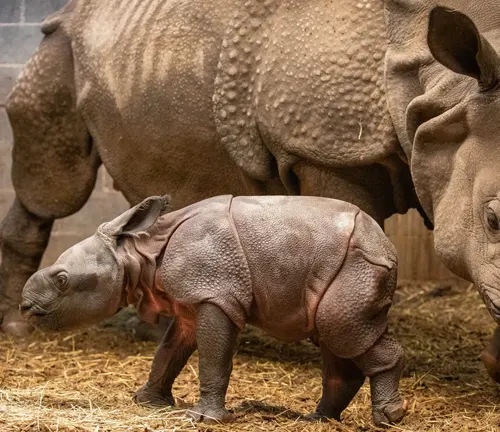
Gestation Period
After successful mating, the female Indian Rhinoceros undergoes a gestation period, which typically lasts for approximately 15 to 16 months. During this time, the developing embryo receives nourishment and grows within the mother’s womb until it is ready to be born. The extended gestation period is a characteristic feature of rhinoceroses and ensures that the offspring are well-developed and ready for survival upon birth.
Offspring Care
Upon birth, Indian Rhinoceros calves are relatively large and well-developed, weighing anywhere from 40 to 60 kilograms (approximately 88 to 132 pounds). The mother provides essential care and protection to her offspring, nurturing them and ensuring their survival during their early stages of life. Calves remain under the care of their mothers for an extended period, typically two to four years, during which they learn essential survival skills such as foraging, communication, and avoiding potential threats. The bond between mother and calf is strong, with the mother displaying protective behavior and providing guidance to her offspring as they navigate their environment.
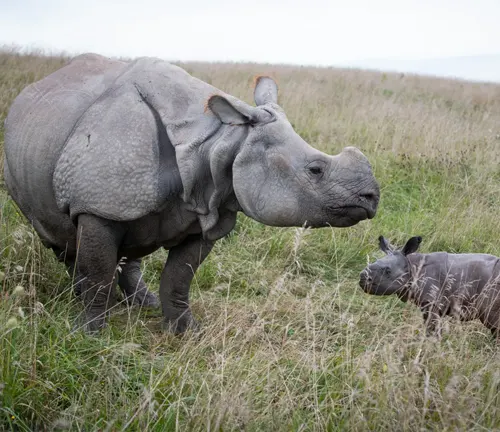
Conservation Status
Threats
The Indian Rhinoceros, Rhinoceros unicornis, faces several threats to its survival in the wild. Habitat loss and fragmentation due to human activities such as agriculture, logging, and infrastructure development pose significant challenges to rhino populations. Additionally, illegal poaching for their horns, which are falsely believed to have medicinal properties in some traditional Asian medicine practices, remains a severe threat. Human-wildlife conflict, including clashes with local communities over resources and territory, further exacerbates the challenges faced by Indian Rhinoceros populations.
Conservation Efforts
Conservation efforts aimed at protecting Indian Rhinoceros populations have been implemented by various organizations and governments. These efforts include the establishment of protected areas such as national parks and wildlife reserves where rhinos are afforded legal protection from poaching and habitat destruction. Anti-poaching patrols and law enforcement initiatives are also critical for deterring illegal hunting and trafficking of rhino horns. Additionally, community-based conservation programs involving local communities in rhino protection and habitat restoration efforts have shown promising results in mitigating threats to Indian Rhinoceros populations.
Cultural Significance
The Indian Rhinoceros holds significant cultural and symbolic importance in the regions where it is found. In Indian culture, rhinos are revered as symbols of strength, resilience, and protection. They are often depicted in art, folklore, and mythology, representing various aspects of local traditions and beliefs. Additionally, Indian Rhinoceroses play a vital role in ecotourism, attracting visitors from around the world to observe these magnificent creatures in their natural habitats. The cultural significance of the Indian Rhinoceros highlights the importance of conserving these iconic species for future generations.
Human-Wildlife Conflict
Human-wildlife conflict poses a significant challenge to the conservation of Indian Rhinoceros populations. Encroachment of human settlements into rhino habitats leads to conflicts between rhinos and local communities over resources such as land and water. Incidents of crop raiding and property damage by rhinos can result in retaliatory killings and negative attitudes towards conservation efforts. Addressing human-wildlife conflict requires implementing strategies such as habitat management, community engagement, and education to promote coexistence between people and rhinos.
Different Species
Javan Rhinoceros
(Rhinoceros sondaicus)
Found in parts of Indonesia, particularly on the island of Java. It is one of the most critically endangered rhinoceros species, with only a few individuals remaining in the wild.

Sumatran Rhinoceros
(Dicerorhinus sumatrensis)
Native to parts of Southeast Asia, including Sumatra and Borneo. Like the Javan Rhinoceros, it is critically endangered, with only a few individuals surviving in fragmented populations.
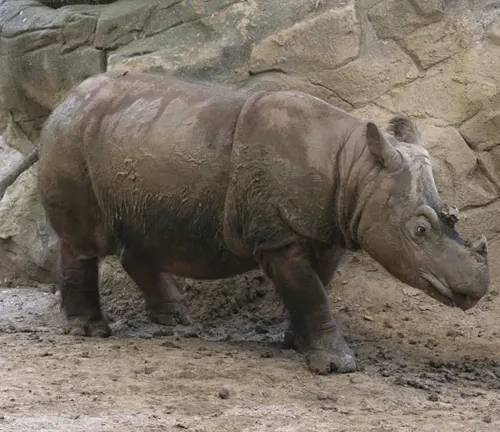
African Rhinoceroses
There are two species of African rhinoceroses: the Black Rhinoceros (Diceros bicornis) and the White Rhinoceros (Ceratotherium simum). Both species are native to Africa and face threats such as habitat loss and poaching for their horns.
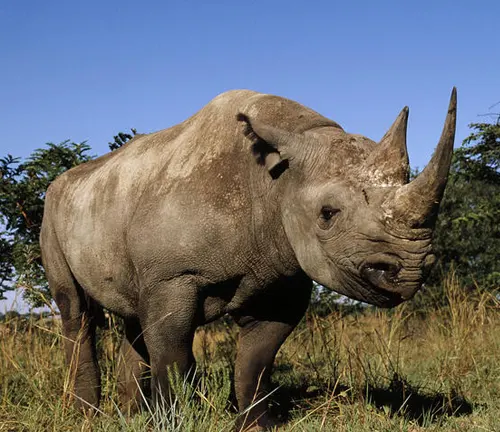
Frequently Asked Questions (FAQs)
- Where are Indian Rhinoceroses found in the wild?
Indian Rhinoceroses are primarily found in the floodplains and grasslands of northern India and Nepal. - How many Indian Rhinoceroses are left in the wild?
The exact population numbers vary, but there are estimated to be around 3,000 Indian Rhinoceroses remaining in the wild. - What are the main threats to Indian Rhinoceros populations?
The main threats include habitat loss, poaching for their horns, and human-wildlife conflict. - How long do Indian Rhinoceroses live in the wild?
Indian Rhinoceroses have a lifespan of around 35 to 45 years in the wild, although some individuals may live longer in captivity. - How big do Indian Rhinoceroses get?
Males typically weigh between 2,200 to 3,000 kilograms, while females are slightly smaller. - Do Indian Rhinoceroses have any predators?
Adult Indian Rhinoceroses have few natural predators due to their large size and formidable horns. However, calves may be vulnerable to predation by tigers and crocodiles. - What is the role of Indian Rhinoceroses in their ecosystem?
Indian Rhinoceroses play a vital role as a keystone species, influencing vegetation dynamics and supporting biodiversity in their habitat. - How do Indian Rhinoceroses defend themselves from predators?
Indian Rhinoceroses rely on their size, strength, and thick skin to defend themselves from predators. They may also charge or use their horns to ward off threats. - Are Indian Rhinoceroses endangered?
Yes, Indian Rhinoceroses are classified as vulnerable by the International Union for Conservation of Nature (IUCN) due to ongoing threats such as habitat loss and poaching. - How do Indian Rhinoceroses communicate with each other?
Communication among Indian Rhinoceroses primarily involves vocalizations such as grunts and snorts, as well as scent marking using preorbital glands to convey information about territory and reproductive status to other individuals. - What is the breeding season for Indian Rhinoceroses?
Breeding can occur throughout the year, although there may be peaks during certain seasons. Mating behavior becomes more pronounced during the breeding season. - How long is the gestation period for Indian Rhinoceroses? The gestation period for Indian Rhinoceroses is approximately 15 to 16 months before the female gives birth to a single calf.


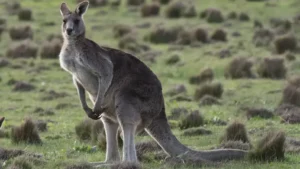
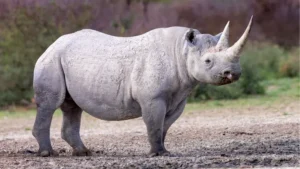

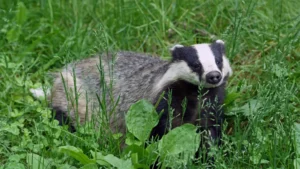


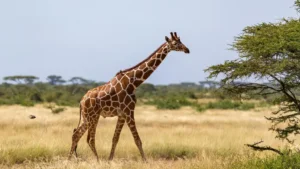


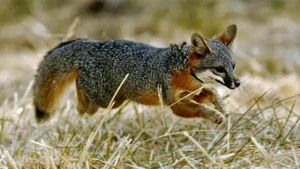
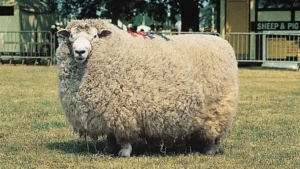
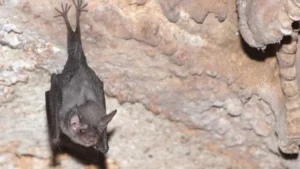
Leave your comment